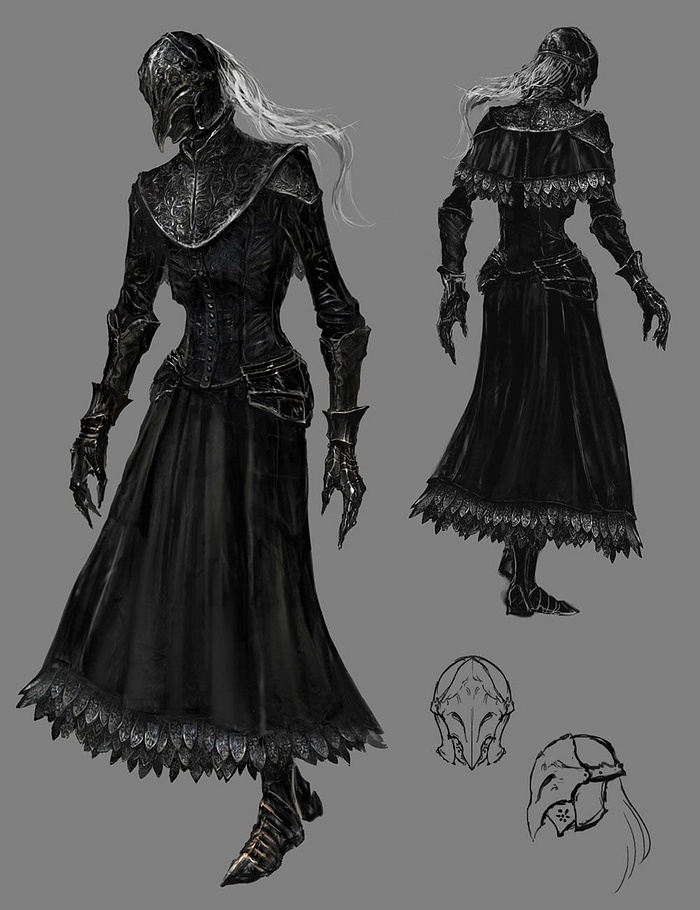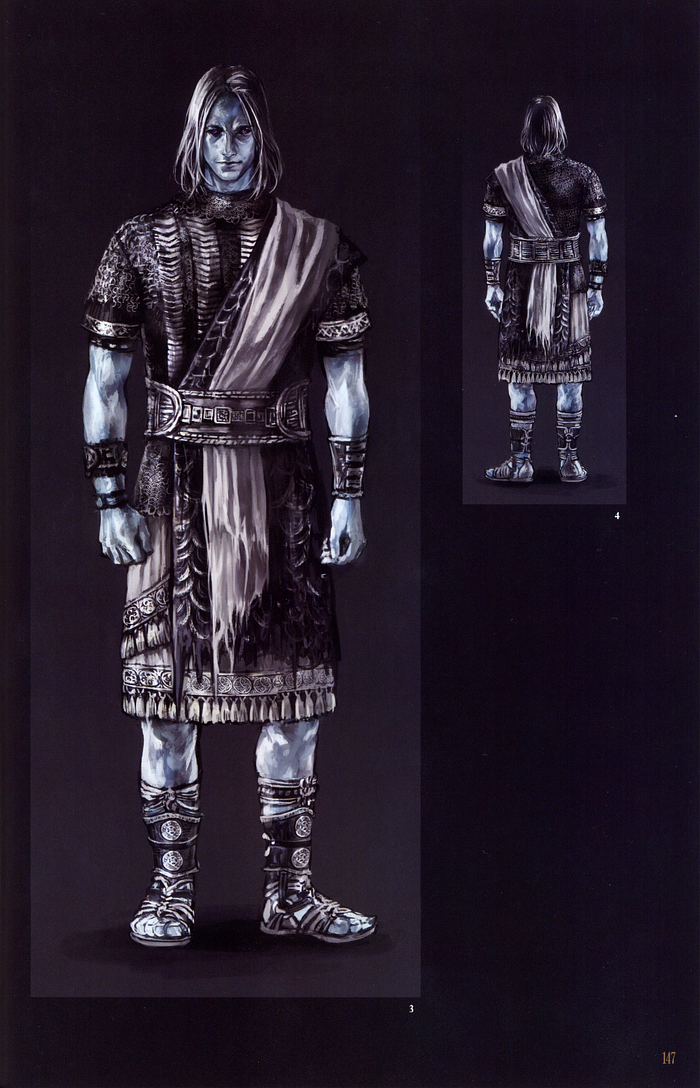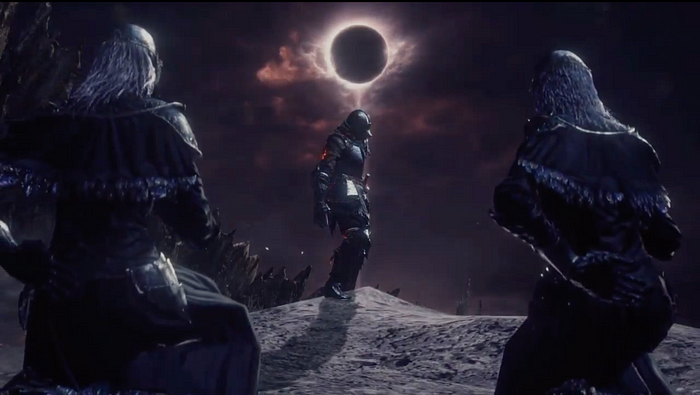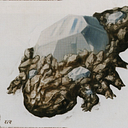
Londor is perhaps the quintessential mystery of Dark Souls 3. A land that appears from nowhere, bearing ties to both New Londo and its Primordial Serpent, with enough influence to create a new Age for man. Despite this, we never see it and any information we receive comes secondhand. This has spawned a multitude of theories about what exactly Londor is to the point that some thought it did not even exist in the present. I want to propose a simpler theory, and one I believe is deeply supported by in-game elements: Londor was located within Drangleic.
Part 1: Londor and History

Dark Souls 3 makes the matter of geography difficult to decipher, as numerous lands are twisting and converging upon Lothric. What we can determine is that Lothric seems to be in close proximity to Lordran currently, if Anor Londo and the Farron Woods are any indication. We do not see Drangleic accounted for in this convergence until we make our way to the Dreg Heap, however a Famitsu Interview sheds some light on Drangleic’s general proximity in relation to Lordran.
Shibuya: The game is set in a different part of the same planet — to put it another way, if the first game was set in the North Pole, this one would be in the South Pole; that sort of contrast.
Following this thread, Dark Souls 3’s introductory cinematic has a seemingly innocuous line present.

Now while I do not believe the North/South Pole analogy was meant to be literal, it’s a bit curious that the Pilgrim point of origin is explicitly south of Lothric. Furthermore, due to the breaking up of kingdoms via the convergence of lands, it is unlikely that they originated from Lordran either as pieces of it are spread throughout the new land of Lothric (though they are technically south, none of the parts of Lordran we see resemble the area the Pilgrims traverse at all). If Londor was New Londo, as is commonly thought, we have nothing to indicate it is south of Lothric at all. This only tells us where Londor isn’t rather than is, so let’s look at the equipment they use instead, as Londor is known for appropriating weapons and spells from various cultures.
Vow of Silence (DS1): Secret rite of the black-haired witch Velka. Prevents casting of magic within effect area. Velka, the Goddess of Sin, is a rogue deity, but she is versed in arts both new and old, and is considered to have a great range of influence even as gods are concerned.
Vow of Silence (DS3): Miracle of the Sable Church of Londor. Prevents spells in the vicinity, including one's own. Members of the Sable Church are all trained swordsmen, each sworn only to their weapons as they bear the leaden silence of Londor.
Dead Again (DS2): Hex that casts a dark flame upon corpses, causing them to combust violently. Hexes such as these, that tamper with life itself, are particularly abhorred.
Dead Again (DS3): Sacrilegious miracle of the Sable Church of Londor.
Bless corpses, transforming them into traps. Londor, the Hollow Realm, is a society of undead, comprised of the corpses and shades of those who led unsavory lives. Is such blessing really something one must ponder?
We can see here that spells appropriated by Londor have had their descriptions changed to only associate themselves with Londor, rather than any ties to Lordran or Drangleic. This still, tells us little geographically. I want to call attention to an odd convention used in items in Dark Souls 3 as it relates to item descriptions which will point us in the right direction.
Drang Set (DS3): Armor of the Drang Knights, proclaimed descendants from the land known for the legend of the Linking of the Fire. Fine protection that is both light and strong, having been reinforced with rare geisteel. The Drang Knights were once feared sellswords, until treason meant descending into the abyss, and they were separated forever.
Shield of Want: Shield of an ancient king who was cursed by an all-consuming thirst. In the end, he was no king. The residue of the king’s lust still smolders within this shield, increasing the number of souls absorbed when enemies are defeated.
As we see here, by the time of Dark Souls 3, Drangleic items’ history remains tied to Drangleic. And yet…
Manikin Claws (DS2): Claws used by the manikins of Harvest Valley. The peculiar art of puppetry is a vestige of the two lost lands. The Queen, entranced by poison, used it to beckon unknowing souls to the defiled valley.
Manikin Claws (DS3): Weapon of the Pale Shades, assassins of the Sable Church of Londor. The curved claws cause heavy bleeding.
Drangleic items associated with Londor are only known to be from Londor! This is different from the Lordran items and spells as those have lost their history entirely (for example, Artorias’ sword now speaks only of his relation to the Abyss Watchers). Drangleic has retained some of its history, except for when Londor is involved. This is still a thin connection at best; we need to go further. Let’s look at one more item, Yuria’s sword DarkDrift.

Darkdrift (DS2): Katana of Grave Warden Agdayne. Has a crystal-clear blade and a strong attack that slices through enemy shields. This katana was originally wielded by the one who gave us first death, and still exists imperfectly between planes.
Darkdrift (DS3): A cursed sword with an unseen blade, the choice weapon of Yuria of Londor. Yuria, a mentor of the Sable Church and accomplished swordswoman, is said to have claimed a hundred lives with this weapon.
Grave Warden Agdayne’s personal sword, once a weapon of GraveLord Nito, has been passed down to Yuria and once again, Londor’s history has superceded all else. This should prove beyond a doubt that at a minimum, the people of Londor at least visited Drangleic, although you could argue Yuria simply killed Agdayne and took his sword, I do not believe this is the case due to one odd detail about him. Agdayne was a Grave Warden, and once, Wolnir, king of Carthus, was too.
Part 2: The Grave Wardens and the Sable Church

King Wolnir of Carthus is a figure who at first glance adds very little to the overarching story. A former Grave Warden turned conqueror king who succumbed to the Abyss (and one of the few characters who openly rejected the gods at that), there’s actually quite a lot going on with him.
Grave Warden Pyromancy Tome: A pyromancy tome of the grave warden, from the Carthus catacombs. Give to the pyromancer master to learn black flame sorceries. High Lord Wolnir of Carthus succumbed to the Abyss, but the pyromancer later became a grave warden, and discovered the black flame.
There is a great writeup covering the Grave Wardens and their significance in Dark Souls 3 already out there, so I won’t retread that ground. Instead I want to examine the purpose of the Grave Wardens, their connections to the Sable Church, and the reasons why the two groups might find common ground.
“I am Agdayne. Guardian of the crypt. Countless dead rest here in peace. Cradled by the comfort of dark. Light only agitates. We have no need for it here.” — Grave Warden Agdayne
Grave Warden Set (DS3): Grave wardens were tasked with disposing of the ever rising corpses that plagued the cathedral. Their clothes are utterly putrid, drenched in the blood and mucilage of their undertaking.

Despite their seeming differences, the purpose of Grave Wardens across titles is to ensure the dead remain dead. Agdayne does this through use of the Dark within the Crypt, while those of Lothric use more brutal means. Of note is Agdayne’s species. I spoke of the differences in species in my last piece, and Agdayne’s dialogue indicates he is yet another species separate from Humanity.
“I am a Fenito. We weave death, and watch over the dead.
This task was granted to me by the one who gave us the first death.
In the past, humans were one with the dark.
The former King of Light…He feared humans. Feared that they would usher in an age of dark.
How queer, you humans. How you go on, never separating truth from fiction.” — Grave Warden Agdayne
Additionally, he has a positive perception of the Dark and uses it to maintain the peace of the Crypt. This is not unlike the Sable Church of Londor’s embracing of their own humanity, hollowing, and Darkness in general.
Londor Braille Divine Tome: A braille tome of Londor, first spoken by Liliane of the Sable Church. Give this to a storyteller to learn miracles of Londor. This is a forbidden tome, as it offers salvation to all Hollows, and conversely curses all things living.
Salvation to Hollows is something both Agdayne and the Sisters of the Sable Church both have in common then, making it more likely that Yuria has received Darkdrift on benevolent terms. But wait, what about the Pilgrims? They benefit from this connection as well.
“I am Yoel of Londor, a pilgrim as you can see, only…Somehow, I’ve failed to die as was ordained.” — Yoel of Londor
Helm of the Insolent: Helmet worn by once-proud clerics. Relics of a party who long ago attempted to conquer the Undead Crypt. For this sin their deaths have been postponed, so they may serve as crypt sentries.
The Fenito have the ability to grant a permanent death to Hollows as they wish — or postpone it entirely. This is something I only learned during my research for this writeup and have never seen brought up elsewhere, but it has tremendous implications. It essentially means the followers of Nito are able to wield death in such a permanent way it supercedes the Undead Curse. This would be of considerable benefit to the people of Londor, who are largely Hollows that yearn for death. Additionally, Clerics are followers of the gods and by their very nature against the Dark and humanity.
Let’s backtrack a bit, a Black Flame was mentioned as being discovered by Wolnir, resulting in numerous Dark Pyromancies being discovered by the Grave Wardens. One in particular is said to have been discovered by Wolnir himself.
Black Serpent Pyromancy: Pyromancy discovered from the Abyss by High Lord Wolnir that inspired the black arts of the grave wardens. Releases undulating black flames that trace the ground. Be it sorcery or pyromancy, all techniques that infringe on humanity lead to the same place. That is to say, they all seek a will of their own.
These are used by the final Sister of the Sable Church, Elfriede in her boss fight. Notably, her use of the black flame gets its own bit of lore.
Onyx Blade: Elfriede, the eldest amongst her sisters and leader of the Sable Church, bestowed this sword to her knight. Only, the sword was a farewell gift, and acceptance signified the knight’s resignation from Elfriede’s service.
Skill: Elfriede’s Blackflame
Enwreath blade with blackflame, born of the similarly-hued flame that smolders within her.
Now what business does a sister of the Sable Church have harboring a flame discovered by Grave Wardens? The intertwined nature of the Grave Wardens and the Sable Church is undeniable by this point, but there is one final, seemingly miniscule clue that I believe cements the Drangleic connection as certainly as one can get in Dark Souls, which brings us to the final segment.
Part 3: The Role of a Monarch

“Oh, good Hollow. I’m afraid I must say… Orbeck of Vinheim is a cause of much consternation. He proclaimeth himself Lord of Hollows. If left alone, he may one day imperil thy rule. Fall to this matter yarely, else we are unraveled. Decisiveness is the mark of a true monarch…
“Ahh, greetings, our Lord and Liege.
Good tidings. Thy spouse is ready.
The time is ripe to greet her.
The girl awaits thee, in the hidden darkmoon chamber of Anor Londo.
So thou mayst a true monarch become.” — Yuria of Londor
These lines alone constitute the only instances of the word “monarch’s” use in the entirety of Dark Souls 3. However the words “true Monarch” appear all throughout Dark Souls 2, used by King Vendrick, Nashandra, and the Emerald Herald among others. It is a cultural norm unique to Drangleic in the games, but what is a “True Monarch?” The best place to look is Vendrick’s dialogue, all of which is relevant, but I will only focus on the following selection.
“Fire came to be, and with it, Disparity.
Heat and cold, life and death, Light and Dark.
Dark was seen as a curse.
Shadow is not cast, but born of fire.
And, the brighter the flame, the deeper the shadow.
Inherit fire, and harness the Dark.
Such is the calling of a true leader…
One day, fire will fade, and Dark will become a curse.
Men will be free from death, left to wander eternally.
Dark will again be ours, and in our true shape…
We can bury the false legends of yore… Only…
Is this our only choice?
Seeker of fire, coveter of the throne.
Seek strength.
The rest will follow…” — King Vendrick
Let’s compare this with Yuria’s dialogue regarding usurping the flame.
“Our Lord and Liege.
I prithee play the usurper.
When the moment cometh to link the fire, wrest it from its mantle.
The Age of Fire was founded by the old gods, sustained by the linking of the fire.
But the gods are no more, and the all-powerful fire deserveth a new heir.
Our Lord of Hollows, it shall be, who weareth the true face of mankind.” — Yuria of Londor
And also with Aldia’s dialogue
“Young Hollow, there are but two paths. Inherit the order of this world, or destroy it.
But only a true monarch can make such a choice.
Very few, indeed, have come even this far.
And yet, your journey is far from over.
Half-grown Hollow, have you what it takes, truly?
I lost everything, but remained here, patiently.
The throne will certainly receive you.
But the question remains…
What do you want, truly?
Light? Dark? Or something else entirely…
There is no path.
Beyond the scope of light, beyond the reach of Dark…
…what could possibly await us?
And yet, we seek it, insatiably…
Such is our fate.” — Aldia, Scholar of the First Sin

It becomes apparent that the philosophies of the Sable Church are nearly 1:1 with those of the rulers of Drangleic, with all speaking of harnessing fire and dark alike to forge a new path. This is not a view shared by any in Lordran except arguably Darkstalker Kaathe, who we know to be the master of Londor, though he never spoke of harnessing fire. With this information in mind I believe we can soundly place Londor’s true location somewhere within Drangleic, explained by their items, customs, and ultimately the path they lead you down for their own salvation.
Thanks for reading, much appreciated.
